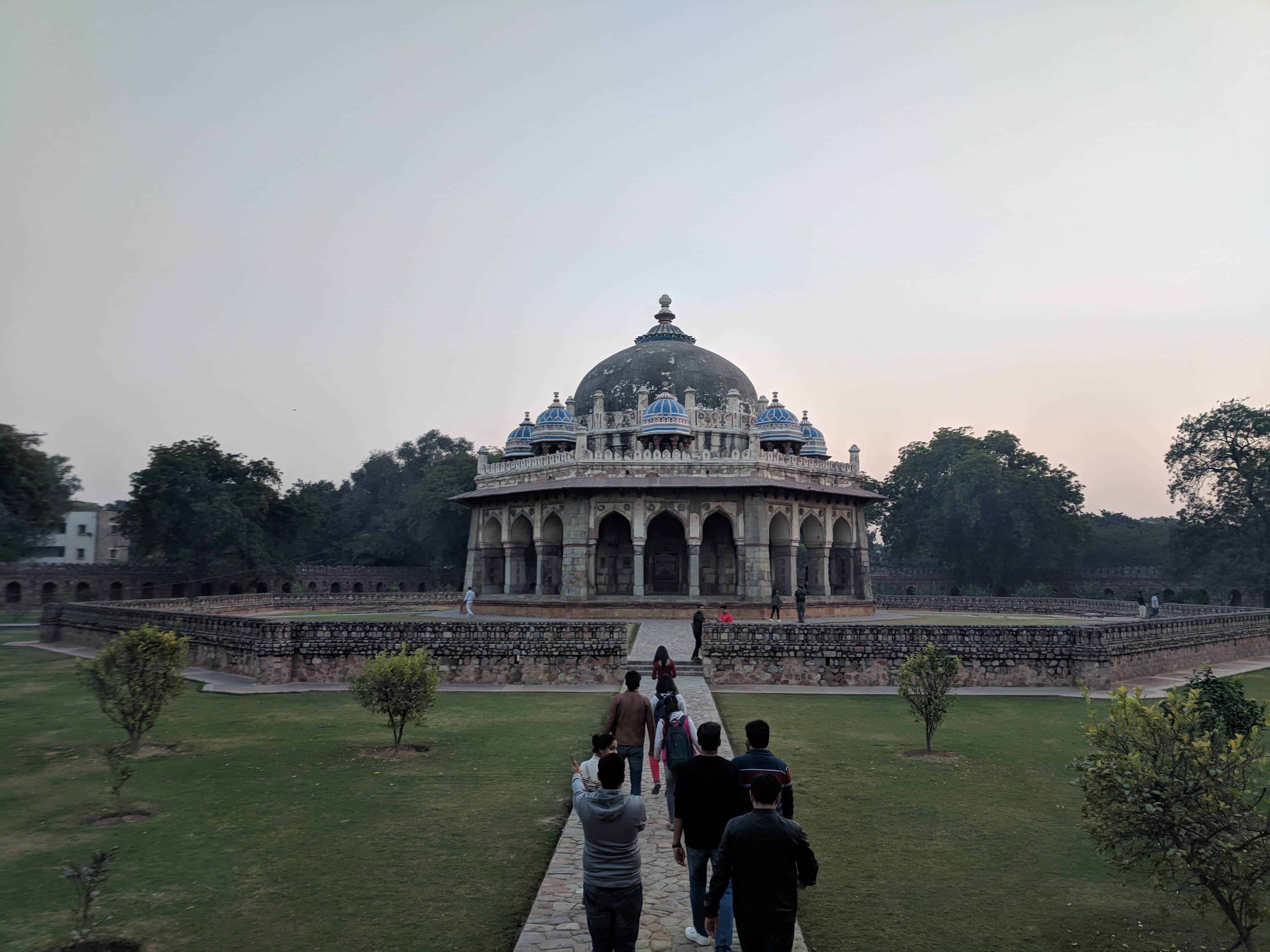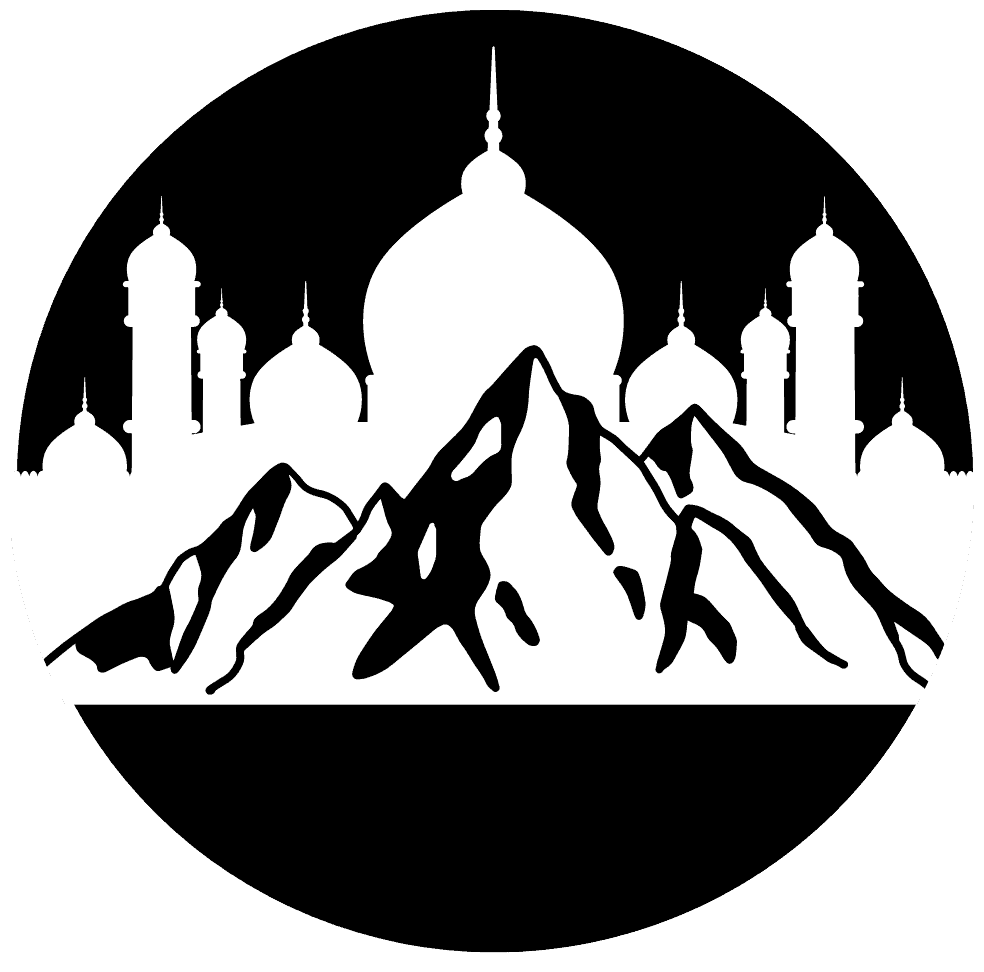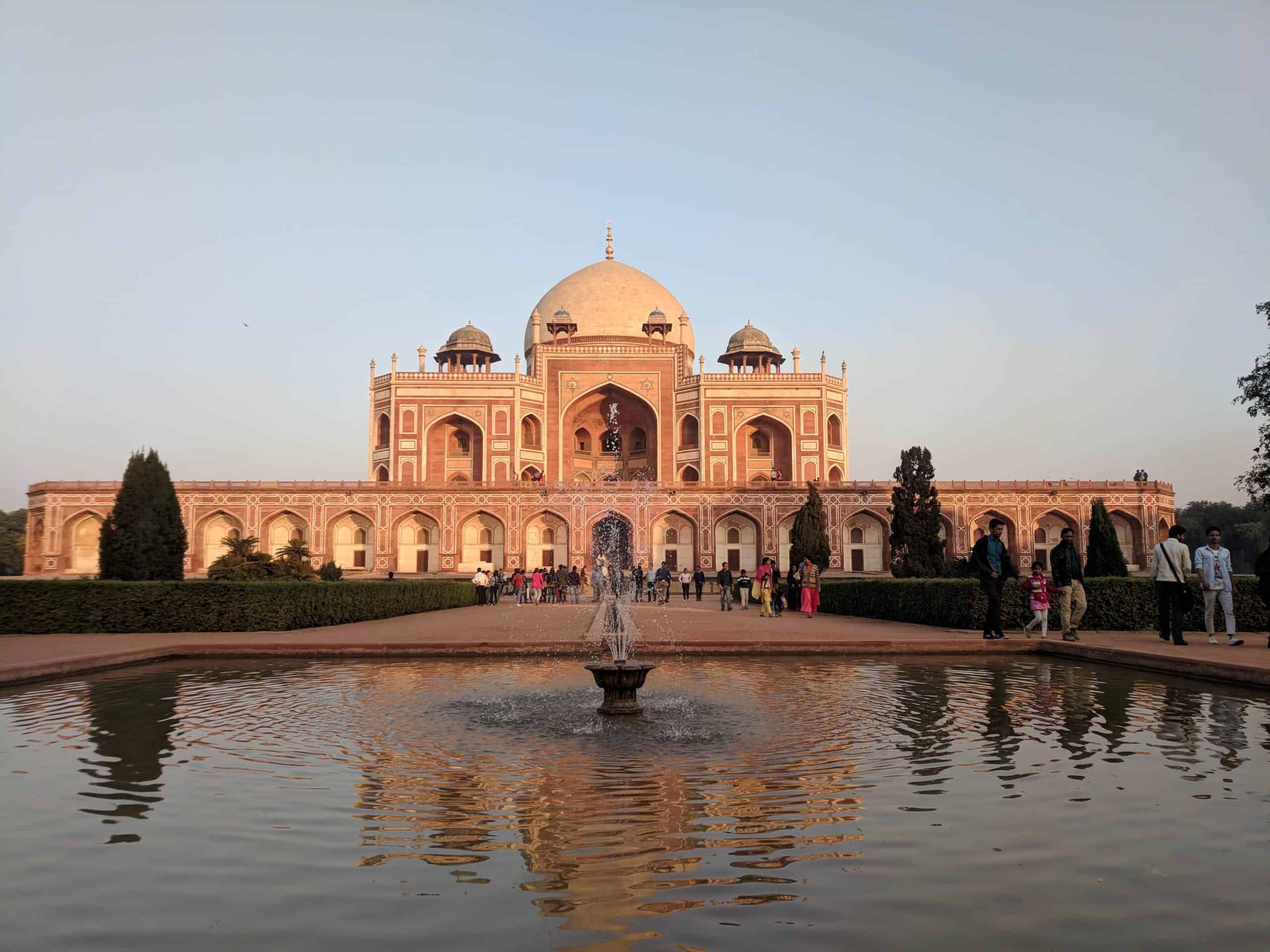Mumbai vs. Delhi: Which Indian City Is Better To Visit?

Are you wondering which city to visit, Mumbai or Delhi? Read on to understand more about each city’s pros and cons.
Mumbai is home to the financial sector and the Bollywood film industry. It’s known for its fast-paced life and scenic coastal lines. While Delhi is the capital city with cultural landmarks and historical architecture to admire.
Deciding which city is better to visit depends on what you’re looking for. Let me give you the lowdown, so you can decide which city might suit your travel vibe better. In full transparency, I slightly favor Mumbai because I lived in there. But I try to lay out the all the traits and benefits of visiting each city as unbiasedly as possible.
Mumbai vs. Delhi: Which City Is Better To Visit?
Asking the question which is better between Mumbai and Delhi is like asking what fruit or color you prefer? It completely depends!
Delhi has been the capital of North India for over 1000 years and of independent India since 1947. Delhi is a rich mix of the medieval and the modern, taking you on a storied journey about India itself, through its colossal monuments, the palatial havelis of Old Delhi, its markets and its scrumptious food. It shows you the faraway influences that made India the melting pot it is and the vibrance of modern day India. Delhi was always the jewel in the crown, for kings from far and wide, and continues to be today.
On the other hand, Mumbai is newer, in its soul, and built for commerce. Seven islands combined by the British through causeways in the mid 18th century, for trade via the sea, Mumbai or Bombay has sprawled to a city of over 20 million today. The financial hub of a rising economic superpower, Mumbai will give you a taste of the epitome of modern Indian city life, a cramped bustling city with everything to offer, minus the old architecture of Delhi!
Often polarizing for Indians, Delhi & Mumbai are two sides of a deeply Indian coin. If Delhi is a history book, Mumbai is a movie!
Mumbai vs. Delhi: which city has more to see?
You’ll surely find plenty to do in both of these busy Indian cities.
What to see in Delhi
If history and architecture are your main interests, Delhi might win. The city is dotted with UNESCO World Heritage Sites, including the Qutub Minar, Red Fort, and Humayun’s Tomb, each telling tales of India’s rich past.
Alongside the past, if you want a peak into post-independence India, visit the old and new Indian Parliament, Rajpath (formerly Kingsway) which is a ceremonial boulevard in Delhi and Rashtrapati Bhavan (Presidential Palace).
Other historical sites to definitely visit include Jama Masjid, Sisganj Sahib, Nizamuddin dargah, and India Gate.
The city’s museums, such as the National Museum and the Gandhi Smriti, provide deep dives into the country’s history and cultural heritage.

What to see in Mumbai
Mumbai has its share of historical sites, such as the Gateway of India, Chhatrapati Shivaji Maharaj Terminus, the Elephanta Caves (a UNESCO World Heritage Site), and the Kanheri caves. However, its historical offerings are more contemporary, with a focus on colonial architecture and modern history.
A walk through Ballard Estate or Fort will show the glorious, British colonial past that built Mumbai. You can also walk through the beautiful villages of Ranwar or Pali Hill to give you a glimpse of the Portuguese influence in Mumbai.
My recommendations for the top things to do in Mumbai include visiting those sites plus enjoying high tea at the Taj Mahal Palace hotel and experiencing an elaborate 10-course tasting menu at Masque.

Mumbai vs. Delhi: which city has better food?
Both cities have delicious dishes not to be missed!
About Delhi’s Food Scene
Delhi is a gastronomical delight. From its street food to its kababs to the world famous butter chicken, Delhi is simply one of the best food cities in the world. Delhi’s food epitomizes the delightful confluence of Persian and Indian food through the ingredients of the Indo-Gangetic plain.
Unmissable foods and places in Delhi:
- Chole bhature: A fluffy deep fried bread with a delicious chick pea curry, a staple Delhi breakfast and all day meal.
- Butter chicken / dal makhani: Both of these dishes were ‘invented’ in Delhi and have become synonymous with Indian food globally. Some places to gorge at include Moti Mahal Daryaganj, Gulati Pandara Road, New Minar GK-1, Dhabha Rajouri Garden, Aslam’s Jama Masjid.
- Chaat, parathas and street Food: You can’t go wrong at Chawri Bazar and Parathe waali gali Chandni Chowk.
About Mumbai’s Food Scene
Mumbai has a different food vibe. It has a lot of the amazing north Indian food that is famous in Delhi but has a unique mix of food from around India and the world, kind of like the city. No other city does quick eats, Parsi food and Indian Chinese like Bombay does!
Unmissable foods and places in Mumbai:
- Parsi cafes: A completely unique and iconic food experience are the Parsi cafes of Mumbai, which aren’t present anywhere else in the world. Mumbai is home to 100k+ of the 200k or so Zoroastrians (Parsis) left in the world and the last hotbed of the glorious Parsi culture. Here are a few must dos: Britannia Cafe Ballard Estate, Yazdani Bakery, Kyani & Co.
- Vada Pav: Also called the Bombay burger by non Mumbaikars, vada pav epitomizes the life of Bombay, a fried potato fritter in the bread (pav) the Portuguese brought to India with some delicious sauce. A quick, delicious snack that can also be a meal if you eat two, easy to eat on the go.
- Pav bhaji & Tawa pulao: Another unique Mumbai experience is the large pan (tawa) cooking that is done in the beach markets and streets.
- Bombay sandwich: Another Bombay staple is the Bombay street sandwich, which can be a mix of anything and everything topped with butter, sev (crispy noodles) and sauce cut into little bite size pieces.
- Chinese: Indian chinese is a unique cuisine where Chinese food was completely Indianized to claim it as Indian. Be sure to try the Triple Schezwan Rice!
- Seafood: Some great places to get local seafood include Mahesh Lunch Home Juhu, Fresh Catch Bandra, Pratap Lunch Home Bandra, Jai Hind Lunch Home, Goa Portuguesa Mahim.
There’s a lot more Mumbai street food options to enjoy! Or if you want to enjoy a nice dining experience, check out these restaurants in South Mumbai.

Mumbai vs. Delhi: which city has better weather?
While Delhi has a continental climate with extreme summers and winters, Bombay has a typical subtropical, coastal climate.
Delhi weather:
Delhi has harsh summers between March to July with temperatures exceeding 40C with dry heat and hot winds.
It then has 3 months of monsoon between July-September followed by a cold winter through October – February with temperatures close to freezing in December, January.
Flight, train timetables are often disrupted due to the thick fog that descends from the Himalayas in December, January.
Best time to visit: October to March.
Mumbai weather:
Mumbai has a more humid, muggy climate with temperatures in the summer months (March – June) between 30C-35C.
The monsoons are an event in Mumbai with the city cooling off between June – August.
This is followed by a few warm months September – November followed by a brief ‘winter’ with temperatures around 15C-25C between December & February with lower humidity.
Best time to visit: October to February

Mumbai vs. Delhi: which city has more nature?
With Sanjay Gandhi National Park, Mumbai has the largest national park (~100 sq km) within city limits anywhere in the world.
In addition, Mumbai has many coastal promenades and parks like Carter Road, Bandstand, Marine Drive, Worli Sea Face, Bandra Reclamation, Priyadarshini Park, Colaba MPT gardens etc. I recommend taking a walk along the sea promenades during sunset.
Delhi, generally having more space is known for its beautiful gardens, some of which include Lodi Gardens, Humayan’s tomb, Mughal garden, Jahanpannah city forest, Buddha Jayanti Park, Deer Park, Nehru Park, Japanese Park, India Gate lawns
Mumbai vs. Delhi: which city is better to live in?
While both places have their pros and cons, Mumbai is a vertical, island city with 80% of India’s skyscrapers, constantly redeveloping and reclaiming land. It is also the city with the most number of 100+ floor buildings currently being built anywhere in the world. Delhi is a horizontal city with more space expanding into satellite towns.
Cost of Living: Mumbai vs. Delhi
Mumbai is considered to be about 20% more expensive than Delhi with the highest cost of living in India and amongst the top 10 in the world.
Traffic: Mumbai vs. Delhi
Both cities have terrible traffic with Delhi ranking as the 44th worst traffic city in the world with Mumbai at 54th. Mumbai currently has exacerbated traffic issues because of the massive coastal road project and 13 metro lines being constructed and only 2 operational.
Public Transit: Mumbai vs. Delhi
Delhi currently has better public transit because of its metro connectivity with 10 metro lines across 250+ kms. Mumbai though is well connected north – south through its 3 local, suburban train lines. However, avoid the during the rush hours as a tourist!
Pollution: Mumbai vs. Delhi
Air pollution is a persistent problem across major Indian cities with massive construction projects ongoing in addition to vehicular pollution, leading to high levels of dust and particulate matter. The AQI is generally worse in Delhi, with the winter months having terrible air pollution due to smog and crop burning in neighboring agricultural states.
Visiting Mumbai and Delhi FAQs
Breaking down other helpful info for visiting Mumbai and Delhi.
How many days is enough to visit Delhi or Mumbai?
On a trip to India where you are visiting a few destinations 2 days is enough in both Mumbai and Delhi. However, you could easily spend anywhere from 5 days to a week to immerse yourself in the local culture and not run out of things to do.
Is it worth visiting Delhi or Mumbai on your first trip to India?
I may be biased because I lived in Mumbai so I lean towards recommending visiting Mumbai over Delhi. Mumbai reminds me more of the pace of life and unique energy that I love about New York City.
However, if your India travel itinerary focuses on Rajasthan destinations and/or visiting the Taj Mahal in Agra, then Delhi might make more sense for your trip.
TLDR: Mumbai vs. Delhi: which city is better to visit?
Choosing between Mumbai and Delhi ultimately comes down to your interests:
- For history and culture enthusiasts: Delhi offers a deep dive into India’s past and diverse cultures.
- For those seeking a more modern city and entertainment: Mumbai provides a dynamic urban experience alongside scenic coastal views.
Both cities showcase India’s lively spirit, each from a different perspective.

